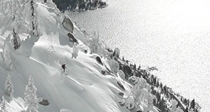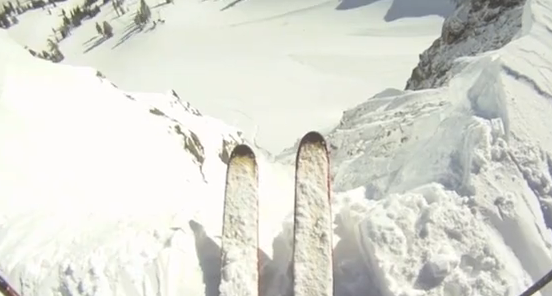By Rob McCormick
When the sun finally came out at the end of March I became depressed. I love snowstorms and had become accustomed to skiing powder every day. On March 28 temperatures soared into the 50’s and began radiating twenty feet of fresh snow like a greenhouse. A ski tour that day brought me within striking distance of one of my favorite zones along the Pacific Crest. I frequently observe this region from a distance but was able to get a good look from a nearby peak. I was amazed by what I saw. The technical face was loaded with snow. Lines that are usually questionable at best seemed to go. More importantly, the menacing cornice that overhangs the ridgeline seemed much smaller than usual (i.e. 10 feet instead of 30 feet). A very long approach and frequent storm conditions had kept the region off my radar most of the winter. I took a few photos and skied back to civilization but could not shake what I had seen.
When I got home I started to realize the warming trend was not all bad. Predictable corn cycles do have their advantages. Long approaches become much more feasible. Steeper lines seem more realistic and less intimidating in perfect corn. It was time to refocus my goggles and start getting fired up for ski mountaineering season.
On April 4, Robb Gaffney and I found ourselves standing on top of the ridgeline I had spied a week prior. It was warming quickly and dead calm. A pole scrape of the face below us indicated two to three inches of perfect corn snow. Although we had both skied lines in the region, neither had dropped the direct fall line routes off the summit. We opted to hit the east/southeast face first as it would get rotten soon. Since we gained the summit from the north we did not have a great view of the face we were going to ski. My photos from the week before indicated it would go and looking down it seemed possible so we dropped in. We could not have asked for better steep skiing snow. We leap frogged down the face with one skier advancing and providing beta on what he found. We came across three different crux zones in which the snow had melted out and required some rock skirting. The pitch held steady at 53 degrees for the entire descent. The last couple hundred feet we each selected a different chute and began to link some legit turns together. The bottom of the face even had a little bergshrund to boot. All said and done the line was only about 700 vertical feet, but a solid shot of adrenaline for sure.
The small vertical meant another run was a must in such ideal conditions. We strapped on our crampons and front pointed up a narrow couloir. About halfway up the chute gave way to a gorgeous summit snowfield which became our next objective. Since we climbed our descent route we new what we were getting into this time and were able to really enjoy it. The northeast facing ramp delivered huge before funneling back into the couloir. The chute itself was really narrow and beatup but the overall aesthetics of the entire line were second to none.
Robb booted back up for one more run while I shot video from across the valley. The day had been a tremendous success. Perhaps the most intriguing aspect of the adventure is knowing the zone contains lines that are far more challenging than the routes we chose. Many narrow chutes and straightlines seem possible in perfect conditions. There is also a large steep face that ends in a mandatory seventy foot air. When you consider the fact the nearest road is about five miles away this becomes extremely committing stuff indeed. Plenty of lines for future generations to get after. In the meantime, it was satisfying to tap into a new rush right in our own backyard known as the Pacific Crest.
The first half of this video includes the trip described above. The second half is a recent tour on the southwest shore of Lake Tahoe.




Recent Comments